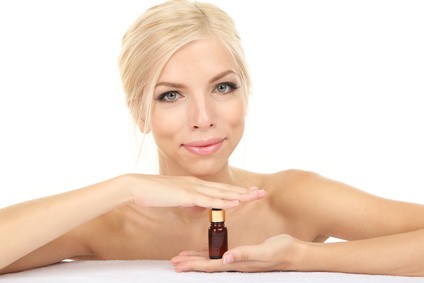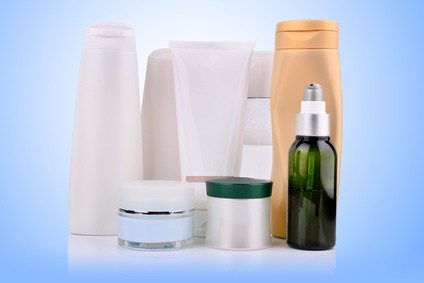Blog
Organic Ingredients and Skin Care Products
Organic is everywhere, products using this word can be found in and out of the kitchen. A trip to the grocery store reveals that this mysterious term is prevalent and found on packaging for all types of products: meets, dairy, fruits, cereals and even cosmetics.
In the early 1990’s the term organic was in its infancy. Today it is embedded into the marketplace and there are many federal laws governing the organic term and the use of its labeling. In the U.S. there are three main federal agencies that reside over the use and labeling of the organic term. The first agency, United Stated Department of Agriculture (USDA) has jurisdiction over the definition of the term organic. Frequently used is the NOP acronym which is the National Organic Program. The second agency is the Food Drug Administration (FDA) which governs the use of labeling. The third agency is the Federal Trade Commission. They are usually involved in labeling, miss-advertising and intent to fraud cases.
Unfortunately, the term organic has gained popularity and is thrown around in marketing campaigns and printed on labels without explanation. This leaves individuals with a vague notion of what organic truly means. The term organic is linked to growers and producers, in regards to their environmental practices. Certified organic growers must meet strict environmental regulations regarding how they manage crops, livestock and agriculture. The word organic in its broadest definition is a classification of a wide range of products and ingredients that includes agriculture, cosmetics, food and beverages.
Organic Ingredient Origins
The term organic relates to how the ingredients are produced and grown, the origins of the plants. It all starts with either organic seeds or organic seedlings and planting stock. The soil in which the organic ingredients are grown in may not contain or been exposed to: ionizing radiation, sewage sludge, manure ash, arsenic, calcium chloride, lead salts, potassium chloride, mined sodium fluoaluminate, sodium nitrate measuring over twenty percent, strychnine and tobacco dust. These are USDA recognized contaminates. Regulations also exist regarding the physical perimeter of the location of where the ingredients are grown. Fields and crops must have security boundaries with additional land around the boundary acting as a buffer zone for reducing risk of unintentional contamination.
During the growth of the organic ingredient the producer may not use any fertilizer or composted plant and animal material that contains a synthetic substance. The producer or grower has to implement environmental management standards to prevent crop and land destruction. This includes infestation of insects, weeds, and diseases. Most environmental management plans include crop rotation.
Even though there is few skin care ingredients derived from livestock these too can be organic. Vanilla cream is an example of an organic ingredient in bath products. Milk and cream is one that may still be technically classified as dairy as it is derived from livestock. The origins of the organic milk must come from animals that have been under continuous organic management for one year prior to the production of the milk. This management includes organic feeding and prohibiting the use of drugs to promote growth.
Shopping for Organic Skin Care Products
The word organic dictates the percentage of organic ingredients in products that have many components. Basically all the organic products can be categorized into three groups based on the percentage of the organic ingredients. These categories are defined by the USDA. In order to be able to use the certified organic label, the ingredients must be one hundred percent organic. The second category is products that are made up of seventy percent of organic ingredients. These products may use the certified organic phrase on packaging. The last category contains products that are comprised of less than seventy percent organic ingredients. These products can only specify the word organic within the ingredient list and no where else on the packaging.
Shopping for certified organic products is one of the best ways to get the most quality for your dollar. Look for the USDA NOP seal on product packages. These skin care products are contaminant and growth hormone free.
Essential Oil Uses in the Home
Essentials oil uses in the home include fighting odours, making housecleaning products, enhancing aromatherapy and repelling common insects. Essentials oils are not the same as perfume oils, fragrance oils or potpourri oils. Instead of containing synthetic ingredients, they contain the true essence of the plant from which they were extracted.
The pleasant fragrance of essential oils will help to fight odours in the home. Sprinkling two to three drops of orange oil in a garbage can will eliminate offensive smells. Or, sprinkling three to four drops of lemongrass oil into the toilet bowl will block unpleasant bathroom odours. For sheets that smell fresh when they come out of storage, sprinkle three to four drops of lavender oil on a paper towel and tuck the paper towel into folded bed linens.
Essential oils may be used in home-made housecleaning products. For simple dusting jobs, fill a spray bottle with water and just a few drops of lemon oil. Spray onto the surface and wipe clean. For an effective floor cleaner, mix two equal parts water and vinegar in a large squirt bottle. Add 15 drops of peppermint oil and shake well. Apply directly to the floor and mop up with clean water.
Many home owners use essential oils for aromatherapy. For a relaxing bath, use this recipe provided by The Aromatherapy Place: mix five drops each of sandalwood oil, chamomile oil and lemon oil plus one drop of almond oil. For aromatherapy around the house, consider purchasing an essential oil diffuser to spread pleasant scents throughout different rooms.
Essential oils may repel household insects. For instance, place peppermint oil in an entryway to keep ants from entering the home. Using a wet cloth with 10 drops of either lavender or lemongrass oil to wipe a window will help to repel flies. For fleas, fill a squirt bottle with water and a few drops of peppermint, spearmint, lavender or lemongrass oils.
Many on-line distributors provide essential oils, but not every distributor makes oils of high quality. Some vendors will supply samples that allow customers to try out the products before buying them. Also, good companies will provide information on the oil’s botanical name, method of extraction and country of origin. In addition, customers should look at the prices of multiple oils to ensure that vendors do not sell all of their oils at the same price. Different oils have more value, and their price should reflect their value.
Essential oils must never be used on the skin in their undiluted form. Also, some oils should be avoided by pregnant women or by those with asthma, epilepsy or other medical conditions. Consumers may direct questions to a qualified aromatherapy practitioner or to a physician. Also, many on-line databases contain information about essential oils uses in the home and any attached precautions.
Essential Oils for Skin Care
Many people find the idea of putting oil on their skin counter-intuitive, conjuring up visions of their worst bout of high school acne. Essential oils, however, aren’t in the same category as cooking oil! More than just sweet smelling perfumes, essential oils can supercharge your skin care, as many of these oils have properties which are believed to be beneficial for the skin.
Often used for aromatherapy because of their pleasant scents, essential oils which are believed to offer drying effects on oily and acne-prone skin include tea tree, cypress and citrus oils (such as grapefruit and lemon). These oils can be found in face washes, toners, moisturizers and other products. Tea tree oil, in particular, is used to treat acne and can be found in topical ointments and liquids to help get rid of those stubborn spots.
If you suffer from dry skin, the idea of using an oil to hydrate your skin probably isn’t an issue, but as essential oils have many different properties, you’ll want to make sure you’re using one with moisturizing benefits. In addition to avoiding citrus oils, stay away from rosemary, rosewood and many of the wood-based oils, which can dry skin out even more. Instead, look for rose, patchouli, ylang ylang, and chamomile essential oils, which help restore moisture to dry, flaky skin.
Essential oils can be used in a number of different ways. If you prefer to mix your own skin-care treatments, add a few drops to carrier oils (such as almond or cocoa butter). This scented oil can be used as a moisturizer, massage or bath oil. Essential oils may be part of the formulation of facial and body care products such as soaps, shower gels, lotions and facial masks, as well as added to hair products like shampoo and conditioner. As essential oils may interact with other components of the formula, it is better to buy products containing the oil than to add them to products you already own.
Treat essential oils like an over-the-counter drug: keep out of the reach of children; use only the recommended amount; and check with your doctor before using them to treat any condition and before using while pregnant, breastfeeding or giving to children. Essential oils should never be used alone on the skin; follow the manufacturer’s instructions about the proper dilution ratio. Before using for the first time, do a patch test to check for allergic reactions. Some essential oils can cause photo-sensitivity, so use caution and sun protection when going outside. Choose your essential oils with care and discover how they will improve your skin-care routine!
The Benefits of Using Essential Oils in Personal Care Products
Many people do not realize that the expensive and natural-looking bar soaps, shampoos, conditioners, face creams and other personal care products they buy are actually filled with synthetic chemicals and unnatural ingredients. If the soaps, shampoos and conditioners you buy are made with fragrances, chances are you are putting all kinds of synthetic chemicals into your body.
It is easy to understand why consumers are confused when they purchase personal care items. The packages of retail soaps often tout fragrances like lavender, rose, sandalwood and other natural-sounding ingredients, but the fragrance oils they use are far from natural. In fact, fragrance oils are synthetic chemicals. The fragrances found in most retail soap comes from the lab, not from the field. That means the lavender bar soap you buy at the store has never seen a flower, and the expensive grapefruit-scented face cream from the local department store has never been near a grapefruit tree.
Essential Oils – A Natural Alternative for Personal Care Products
Essential oils are a better choice when it comes to personal care and hygiene products. They are superior to traditional fragrances in a number of important ways. Perhaps the most striking contrast between those fragrances and essential oils is their derivation. The fragrances found in most retail personal care products are created by scientists in a laboratory. Those scientists combine synthetic chemicals to create a scent that mimics real flowers and other fragrances.
Essential oils are completely different – and completely natural. Essential oils are extracted from plants that contain aromatic properties and are chosen for their pleasing scents and their high quality. When you buy a bar of soap that contains lavender essential oil, you are buying something that has been extracted from an actual lavender plant and not manufactured in a laboratory.
The fact that essential oils are derived from the plants for which they are named means that they have a more natural and pleasant aroma. While a lavender-scented soap made with fragrance oil may smell vaguely of a lavender flower, a bar of soap containing lavender essential oil actually comes from the lavender plant. That is a huge difference, and one that consumers need to be aware of.
Essential oils can also be valuable for their aromatherapy properties. Unlike artificial fragrances, which do not occur in nature, essential oils contain all the natural elements of the plants from which they are derived. Aromatherapy experts use those essential oils to treat a number of conditions, from muscle aches and emotional imbalance to arthritis and skin problems.
When you choose bar soap, shampoo, conditioner, face cream and other personal care items, it is important to take a good look at the ingredients and remember that quality does matter! If the ingredients include artificial fragrances, you may not be getting everything you are paying for. Personal care items made with essential oils offer so much more – from all-natural scents to the benefits of aromatherapy.




